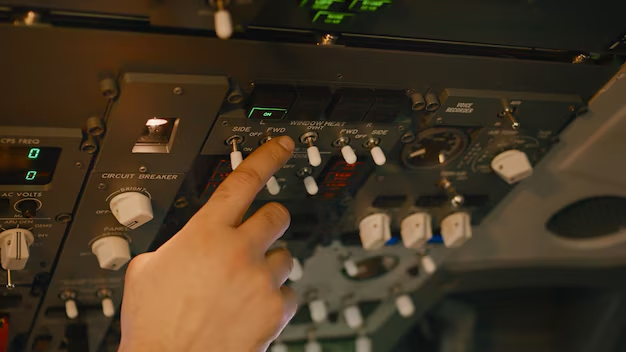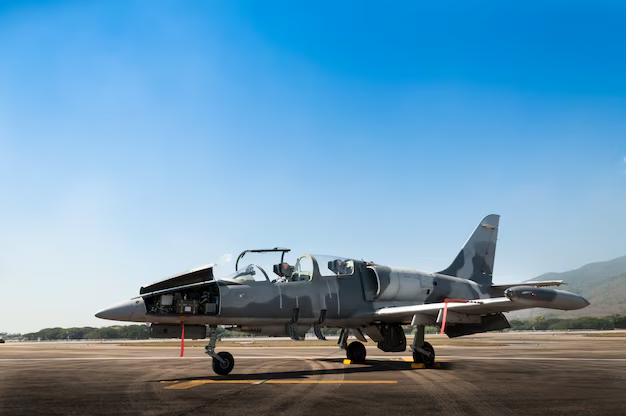Aircraft wiring systems are the backbone of any modern aircraft, serving as critical conduits for power and data throughout the plane.
From navigation systems to in-flight entertainment, these complex networks ensure that every onboard system functions seamlessly.
Given the high stakes of air travel, ensuring the safety and reliability of these wiring systems is paramount.
This is where the ARINC (Aeronautical Radio, Inc.) standards come into play, providing a set of guidelines designed to streamline aircraft systems’ operations and testing.
One such essential standard is ARINC 605, which focuses specifically on testing aircraft wiring systems.
As the complexity of aircraft wiring increases with technological advancements, having a standardized approach to testing ensures consistency, safety, and efficiency in aircraft maintenance and operations.
In this blog, we’ll explore the ARINC 605 standard, its importance in aircraft wiring system testing, and the benefits it offers to the aviation industry.
What is ARINC 605?
ARINC 605 is a crucial standard developed by Aeronautical Radio, Inc. (ARINC) that outlines the guidelines for testing aircraft wiring systems.
It serves as a comprehensive framework for ensuring that the wiring in modern aircraft meets stringent safety and performance standards.
Aircraft wiring systems are highly complex, comprising thousands of cables that transmit both power and data across various systems, and ARINC 605 provides a structured approach to testing these intricate networks.
Introduced to standardize testing protocols, ARINC 605 ensures that the methods used to evaluate wiring systems are both reliable and efficient.
It addresses critical aspects such as test equipment, procedures, and criteria for identifying wiring faults or failures.
By adhering to ARINC 605, manufacturers and maintenance teams can ensure compliance with regulatory requirements while minimizing the risk of electrical failures that could compromise aircraft safety.
The standard is widely used across the aviation industry, both in the commercial and military sectors, to maintain the integrity of aircraft wiring throughout the lifecycle of the aircraft.
Its key focus areas include testing for insulation integrity, continuity, and proper grounding, all of which are vital for ensuring the safe operation of an aircraft.

The Importance of Wiring System Testing in Aircraft
Aircraft wiring systems are integral to the safe and reliable operation of all onboard electronics, making rigorous testing essential.
With the increasing complexity of modern aircraft, wiring networks not only power critical systems but also support communication, navigation, and control functions.
Any fault or failure in these wiring systems could lead to malfunctions that compromise passenger safety or disrupt flight operations.
Wiring system testing is crucial for several reasons. First, it helps identify and prevent electrical issues before they become serious problems.
Faults such as short circuits, insulation breakdowns, or poor connections can cause electrical failures, potentially leading to system shutdowns or hazardous situations during flight.
By testing these systems regularly, airlines can detect issues early and address them before they escalate.
Secondly, testing ensures compliance with strict aviation safety standards and regulations.
Aviation authorities, like the Federal Aviation Administration (FAA) and the European Union Aviation Safety Agency (EASA), require that aircraft wiring systems meet specific performance and safety benchmarks.
Adhering to standards such as ARINC 605 ensures that aircraft remain airworthy and compliant with these regulations.
Furthermore, wiring system testing extends the lifespan of the aircraft by reducing the likelihood of in-flight failures and the need for costly emergency repairs.
Early detection of wiring faults helps minimize downtime, improving operational efficiency and reducing maintenance costs.
In a high-stakes industry like aviation, where safety and performance are non-negotiable, robust testing of wiring systems plays a pivotal role in maintaining the reliability and safety of flights.
Key Components of ARINC 605
ARINC 605 is designed to provide a structured and detailed approach to the testing of aircraft wiring systems.
Its framework addresses various aspects of testing, from tools to methodologies, ensuring thorough and accurate assessments of wiring health. Here are the key components that form the foundation of ARINC 605:
1. Test Equipment Specifications
ARINC 605 outlines the requirements for the test equipment used to assess wiring systems. This includes devices for measuring continuity, insulation resistance, and the integrity of shielding.
These tools must meet certain precision standards to ensure that the results are reliable and consistent across different testing environments. The standard also emphasizes the use of automated testing tools to increase efficiency and reduce human error during testing.
2. Procedures for Continuity and Insulation Testing
A critical focus of ARINC 605 is on continuity and insulation testing. Continuity tests are designed to ensure that electrical circuits are uninterrupted, verifying that wiring connections are complete and functioning.
Insulation testing, on the other hand, measures the quality of insulation around the wiring to ensure it is effective in preventing short circuits or interference. The standard provides detailed procedures for performing these tests, ensuring accuracy and consistency.
3. Wiring Fault Identification and Troubleshooting
ARINC 605 includes guidelines for identifying and troubleshooting wiring faults. This involves recognizing common issues such as shorts, opens, and cross-connections, which can severely impact the performance and safety of the aircraft.
The standard also provides methods for tracing and pinpointing the exact location of these faults, enabling quick and efficient repairs.
4. Grounding and Shielding Verification
Effective grounding and shielding are essential for minimizing electromagnetic interference (EMI) and ensuring the proper functioning of avionics systems.
ARINC 605 addresses the testing of grounding systems to ensure that they are correctly installed and functioning as intended. It also covers the testing of wire shielding to verify that it effectively prevents external interference, safeguarding critical aircraft systems from potential disruptions.
5. Documentation and Reporting
ARINC 605 places a strong emphasis on the documentation and reporting of test results. This ensures traceability and provides a clear record of the wiring system’s health.
Detailed reports are essential for maintenance teams to track the performance of wiring over time, enabling predictive maintenance and preventing potential failures.
The standard specifies the format and content of these reports, ensuring consistency and thoroughness in recording test outcomes.
6. Periodic Maintenance Testing
In addition to initial installation testing, ARINC 605 emphasizes the need for regular, periodic maintenance testing of wiring systems.
This ensures that any degradation or wear in the wiring is identified and addressed before it leads to significant issues.
The standard provides guidelines on how often testing should be conducted based on the type of aircraft and its usage patterns, helping operators maintain long-term safety and performance.
Each of these components plays a vital role in ensuring that aircraft wiring systems are tested comprehensively, efficiently, and to the highest safety standards.
ARINC 605’s clear and detailed guidelines help reduce the risk of wiring failures and ensure the reliable operation of critical aircraft systems.
Benefits of Using ARINC 605 in Aircraft Wiring System Testing
Implementing ARINC 605 for aircraft wiring system testing offers numerous advantages, enhancing both safety and operational efficiency in aviation. Here are some key benefits of adhering to this standard:
1. Enhanced Safety and Reliability
One of the primary benefits of ARINC 605 is its contribution to overall aircraft safety. By following the rigorous testing protocols outlined in the standard, potential wiring faults can be identified and addressed before they lead to in-flight issues. This proactive approach helps prevent electrical failures that could compromise aircraft systems, ensuring a higher level of reliability and safety for passengers and crew.
2. Standardization and Consistency
ARINC 605 provides a standardized approach to testing, which ensures consistency across different aircraft and maintenance teams. This standardization helps eliminate variability in test results and procedures, making it easier to compare performance and identify issues. Consistent testing practices also facilitate smoother operations and integration with other ARINC standards and industry regulations.
3. Improved Compliance with Regulatory Requirements
Adhering to ARINC 605 helps aircraft operators and manufacturers comply with stringent aviation regulations. Regulatory bodies such as the Federal Aviation Administration (FAA) and the European Union Aviation Safety Agency (EASA) mandate specific safety and performance benchmarks for aircraft systems. By following ARINC 605, organizations can ensure that their wiring systems meet these regulatory requirements, avoiding potential compliance issues and penalties.
4. Cost-Effective Maintenance
Regular testing in line with ARINC 605 can lead to significant cost savings in maintenance. Early detection of wiring issues reduces the likelihood of unexpected failures and emergency repairs, which can be costly and disruptive. By identifying and addressing potential problems during routine checks, maintenance teams can perform repairs more efficiently and avoid costly downtime.
5. Enhanced Troubleshooting and Repair Efficiency
ARINC 605 provides detailed guidelines for identifying and troubleshooting wiring faults. This structured approach simplifies the process of pinpointing issues and accelerates repair efforts. With clear procedures and effective diagnostic tools, maintenance teams can address faults more quickly and accurately, minimizing the impact on aircraft operations.
6. Increased Aircraft Longevity
By ensuring that wiring systems are thoroughly tested and maintained according to ARINC 605 standards, the longevity of the aircraft can be extended. Regular testing helps to prevent wear and degradation that could lead to premature system failures. This proactive maintenance approach contributes to the overall lifespan of the aircraft, maximizing its operational value.
7. Better Documentation and Record-Keeping
ARINC 605 emphasizes the importance of thorough documentation and reporting of test results. Detailed records provide a clear history of the wiring system’s performance, which is invaluable for ongoing maintenance and regulatory audits. This documentation helps track the health of the wiring system over time and supports predictive maintenance strategies.
8. Facilitation of Technological Integration
As aircraft technology evolves, ARINC 605 supports the integration of new technologies and systems. The standard provides a framework that can be adapted to accommodate advancements in wiring and testing methodologies, ensuring that aircraft systems remain compatible with the latest technological developments.
Overall, ARINC 605 offers a comprehensive and effective approach to testing aircraft wiring systems, providing numerous benefits that enhance safety, efficiency, and compliance. By implementing this standard, the aviation industry can maintain high levels of operational reliability and ensure the continued safety and performance of aircraft.
ARINC 605 in Modern Aircraft: Examples and Applications
ARINC 605 plays a vital role in ensuring the reliability and safety of aircraft wiring systems, especially as modern aircraft become increasingly sophisticated. The implementation of this standard is evident across various types of aircraft, showcasing its adaptability and importance in today’s aviation industry. Here are some examples and applications of ARINC 605 in modern aircraft:
1. Commercial Airliners

In commercial airliners, such as the Boeing 787 Dreamliner and the Airbus A350, ARINC 605 is used to ensure the integrity of the extensive wiring systems that support advanced avionics, in-flight entertainment, and passenger comfort systems. For instance, the wiring that connects the aircraft’s flight control systems, communication networks, and power distribution must be tested rigorously to prevent failures that could impact flight safety or passenger experience. ARINC 605 guidelines help maintain these systems to the highest standards, ensuring reliable operation across long-haul flights.
2. Military Aircraft

Military aircraft, such as the Lockheed Martin F-35 Lightning II and the Boeing KC-46 Pegasus, rely heavily on ARINC 605 for testing their complex wiring systems. These aircraft incorporate advanced avionics, radar systems, and electronic warfare components, all of which require robust and reliable wiring. ARINC 605 helps in verifying the wiring integrity that supports these critical systems, ensuring that the aircraft can perform its mission without electrical issues that could compromise operational effectiveness or safety.
3. Regional and Business Jets

Regional and business jets, such as the Embraer E-Jet Series and the Gulfstream G650, also benefit from the application of ARINC 605. These aircraft, while smaller, still require rigorous wiring system testing to support their sophisticated avionics and passenger amenities. ARINC 605 guidelines ensure that the wiring in these jets is tested for continuity, insulation, and grounding, contributing to the overall safety and reliability of the aircraft.
4. Next-Generation Aircraft Systems

As the aviation industry moves towards more advanced and automated aircraft systems, ARINC 605 continues to play a crucial role. For example, in aircraft designed with more electric propulsion systems or hybrid technologies, ARINC 605 helps ensure that the new wiring systems meet the required safety and performance standards. This includes testing the wiring for new power distribution systems and integrated flight control networks that are essential for the operation of these next-generation aircraft.
5. Aircraft Maintenance and Upgrades

ARINC 605 is also applicable in the maintenance and upgrade of existing aircraft. When older aircraft undergo upgrades, such as the installation of new avionics or avionics retrofit projects, ARINC 605 guidelines are used to test the new wiring systems and ensure compatibility with existing systems. This ensures that upgrades do not introduce new electrical issues and that the aircraft continues to operate safely and efficiently.
6. Specialized Aircraft

In specialized aircraft such as those used for surveillance, reconnaissance, or scientific research, ARINC 605 ensures that the unique wiring systems supporting specialized equipment are thoroughly tested. For example, in an aircraft equipped with advanced sensors or scientific instruments, ARINC 605 guidelines help verify the wiring that connects these systems, ensuring that data transmission and power distribution are reliable.
The application of ARINC 605 across these diverse examples highlights its versatility and importance in the aviation industry. Whether in new designs, upgrades, or specialized aircraft, the standard ensures that wiring systems meet rigorous safety and performance criteria, contributing to the overall reliability and success of modern aviation operations.
Conclusion
In conclusion, ARINC 605 stands as a cornerstone in the realm of aircraft wiring system testing, providing a comprehensive framework that ensures safety, reliability, and performance across a wide range of aviation applications. As aircraft technology continues to advance and systems become more complex, the role of ARINC 605 in maintaining the integrity of wiring systems becomes increasingly crucial.
The benefits of adhering to ARINC 605 are substantial, including enhanced safety, standardized testing procedures, improved compliance with regulatory requirements, and cost-effective maintenance. By implementing this standard, the aviation industry can effectively manage the intricate wiring networks that support everything from basic flight operations to advanced avionics and passenger systems.
From commercial airliners and military jets to next-generation aircraft and specialized research platforms, ARINC 605 provides a reliable foundation for ensuring that wiring systems perform optimally and meet the highest safety standards. Its application helps prevent electrical failures, extend aircraft longevity, and support the seamless integration of new technologies.
As the aviation industry looks towards the future, the continued adoption and evolution of standards like ARINC 605 will be pivotal in addressing emerging challenges and ensuring the ongoing safety and efficiency of aircraft operations. Embracing these standards not only safeguards the integrity of current systems but also lays the groundwork for innovative advancements in aircraft technology.






